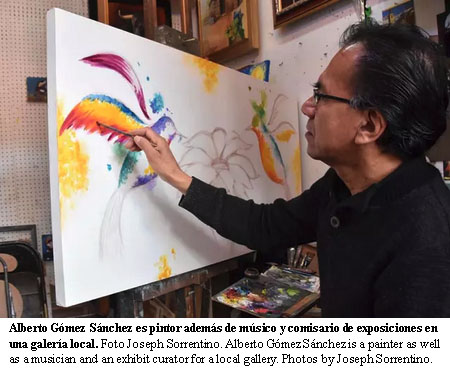A haunt of Diego Rivera and Frida Kahlo, the Barrio del Artista remains a vibrant art community
Puebla city is probably not the first place you think of when listing off the world’s venerable old artists’ quarters, but the Puebla state capital’s Barrio del Artista (artist’s neighborhood) has been going strong for over 80 years, a small but cohesive community of creatives ever since it was founded by a pair of brothers.
Artists José and Ángel Márquez Figueroa raised the idea of creating an artists’ neighborhood in the city back in 1940 while holding outdoor classes in an area known as El Parián. José asked his students if they’d like to have an area in the city dedicated to artists and, of course, they all did.
After several months of effort, they secured a meeting with then-governor Gonzalo Bautista Castillo, who agreed that it was a good idea. Mayor Juan Manuel Treviño gave them a location at Calle 8 Norte, Esquina 4 Oriente, and the artists soon formed the Union of Plastic Arts of Puebla, an artists’ collective. The union held its first exhibit on May 5, 1941.
Eighty years later, the Barrio, the gallery and the union — now named the Union of Plastic Artists of Puebla of the Artist’s Neighborhood — are all still in existence, despite the fact that most of the union’s members are painters. “Two are sculptors and three are musicians,” Laura Díaz Heredia, the union’s secretary, said.
Díaz herself is a painter who specializes in portraits — “I like the expressions in portraits,” she said — but she also works as a sculptor, restores a variety of artwork and, like most of the artists there, gives classes.
She’s apparently an excellent and influential teacher. María Fernanda Castañeda Coiro, a preschool educator who, after studying with Díaz for four months, said she’d consider a career change. “If I have the opportunity, I would like to work as an artist,” Castañeda said.
The Barrio occupies a plaza that’s a block long. “There are 43 workshops,” Díaz explained. “Everyone in the Barrio is a member [of the union], and we are 38 members.”
One of the studios in the Barrio is used for a café, two are used to give courses and two are called the Rincón Histórico (historic corner), where photographs of the Barrio’s early years are on exhibit. The first one is a photograph of the extraordinary group of artists who exhibited in 1962.
In May of that year, a gallery named for José Luis Rodríguez Alconedo, a painter and revolutionary who was executed in 1815 for his antigovernment actions, opened on the second floor of one of the buildings in the neighborhood. Its exhibit featured some of Mexico’s most famous artists, including Diego Rivera, Frida Kahlo and Rufino Tamayo.
So it’s perhaps not surprising that becoming a member of the Barrio is no easy feat.
“There is an exam to get in,” Díaz said. “An artist must show the type of work, the way one works. It is a process that takes several years. It is a little difficult to join, yes. It is not impossible but it is hard.”
There are many benefits to having a studio here and being part of the union, she said. “[It] is to know other artists, to share knowledge, to talk about problems and to talk about art,” she said.
A couple of doors down from Díaz’s studio, Julian Villalobos Pérez was putting the finishing touches on a painting. Most of his work depicts Mexican pueblos.
“My technique is applying oil paint with a spatula,” he said. But he doesn’t always paint on a canvas. “I paint on papel amate,” he said, “a pre-Hispanic paper from San Pablito,” a pueblo in the Puebla municipality of Pahuatla.



